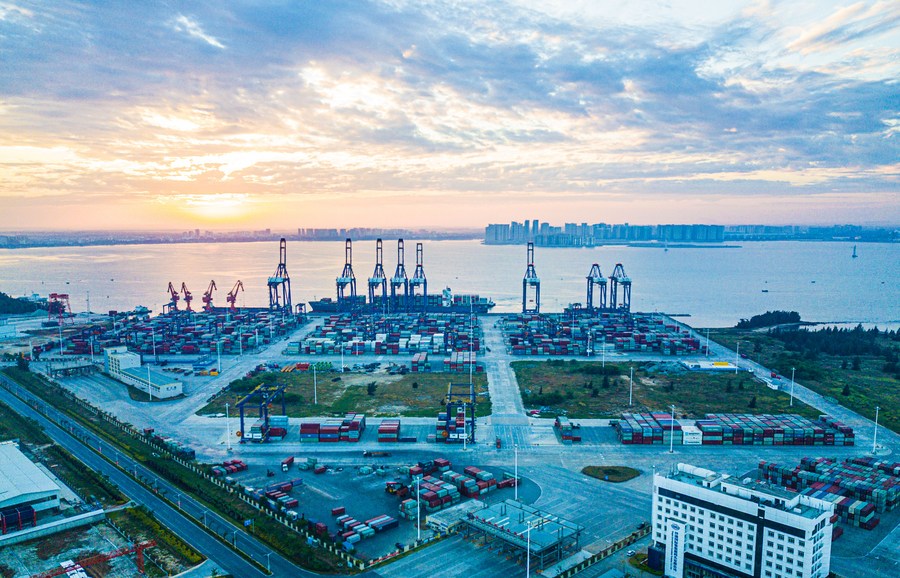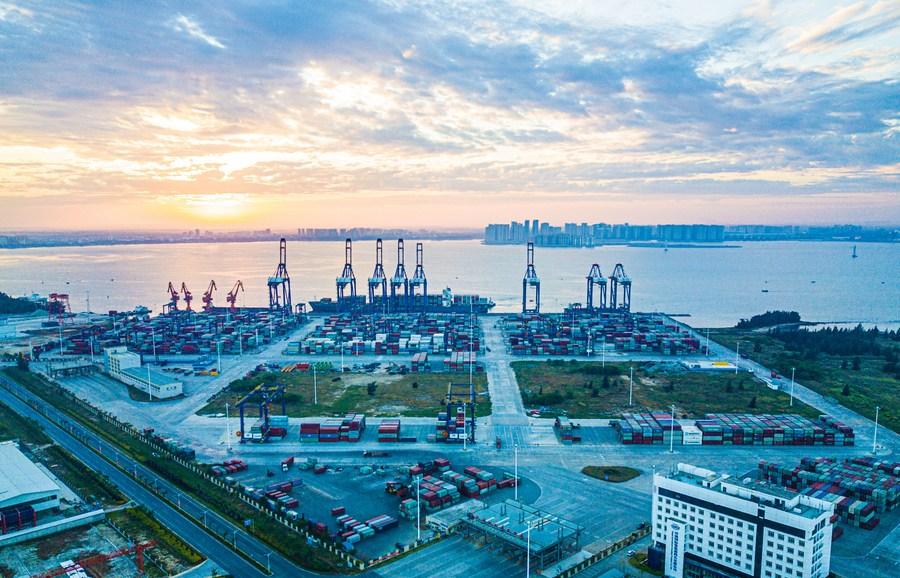
Aerial photo taken on Dec. 5, 2021 shows the sunrise scenery of the Yangpu international container port at Yangpu economic development zone in south China's Hainan Province. (Xinhua/Pu Xiaoxu)
BEIJING, Dec. 15 (Xinhua) -- China's economy continued its recovery momentum in November despite downward pressure, with solid growth in the real economy, official data showed Wednesday.
Retail sales of consumer goods in November went up 3.9 percent year on year in November, while value-added industrial output increased 3.8 percent year on year last month, data from the National Bureau of Statistics (NBS) showed.
Fixed-asset investment went up 5.2 percent year on year in the first 11 months of the year, with investment into high-tech industries accelerating, according to the data.
The country's surveyed urban unemployment rate stood at 5 percent in November, 0.2 percentage points lower than the same period last year.
"The growth resilience has been continuously enhanced and the economic operation is generally stable," the NBS said in a statement.
The world's second-largest economy is faced with pressure from demand contraction, supply shocks and weakening expectations, according to the tone-setting Central Economic Work Conference that concluded last week.
"Despite multiple pressures, the fundamentals of China's long-term economic development stood unchanged," said NBS spokesperson Fu Linghui at a press conference.
Wednesday's data showed that the "real sector" of the economy registered solid expansion. The value-added output for major companies in the manufacturing sector witnessed accelerated growth, while high-tech industries saw rapid growth.
The production of industrial robots jumped 27.9 percent year on year, while the output of new energy vehicles surged 112 percent from a year ago.
"The real economy continued to strengthen and positive changes have gradually increased. However, we must also see that the international environment is becoming more complicated and grim, and the impact of COVID-19 at home is still lingering," Fu said.
To ease the downward pressure on the real economy, China has recently announced a cut in the reserve requirement ratio for financial institutions, which took effect on Wednesday.
The reduction is expected to inject a total of 1.2 trillion yuan (about 188 billion U.S. dollars) in long-term funds into the economy.
China will continue implementing proactive fiscal policies and prudent monetary policies for steady economic progress next year, according to the key conference.
As macro policy adjustment intensifies, policies to ensure supply and price stability take effect and measures to expand domestic demand gain momentum, expectations from firms will remain generally stable, Fu said.
Looking forward, China's domestic demand still has huge potential for growth while unbalanced development in urban and rural regions leaves room for more investment, both of which will shore up the country's growth in the future, he said.




 A single purchase
A single purchase









